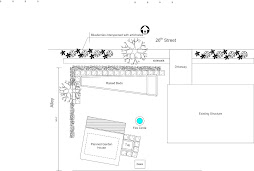For my gardens which cover the better part of two lots, I have two 4X4X4 piles. I harvest about two times per year. I get about two cubic yards of super good stuff per harvest. It's full of worms.
In truth, I'm not a very good composter. I do layer, but should really turn more frequently, water better in the summer, etc. Nonetheless, compost is forgiving: even my slacker style composting pays off in good measure.
One issue I've recognized however is that my starting notions of the scale on which I should compost are no longer suitable for my goals. My original notion was just to compost, e.g. have a compost pile. Super. Did that. Seems to work.
But, now I'm trying stop hauling stuff (soil, manure, etc.) into my garden from without and I'm trying to stop hauling stuff out of my garden (cuttings, sticks, weeds, etc.). Composting is clearly the answer, but I need to improve my technique and probably change the scale of my operations somewhat.
I currently haul out about 3 pickup loads of biomass each year. Most of this is material I currently deem to be non-compostable. That includes invasive species, big woody stuff, and whatnot. I want to eliminate those loads this next year.
Similarly, this year I have hauled in a massive amount of soil, manure, etc. Almost all of that has been associated with a one-time build-out of new garden space over a short period of time. If I'd been in less of a hurry, I could plausibly have built using my own compost, but if my math is correct that would have taken me about 10 years. To put it bluntly, I'm too old for that shit. (Sorry, couldn't resist!) Next year (after my new raised beds are filled), I won't bring anything in.
So, the challenge is really about finding a compost solution for the 3 pickup loads of biomass I produce annually. I think this is a realistic goal. I don't know what the solution will look like exactly, but here are a some starter observations:
- Sizing a compost pile is a critical part of garden design. It's not trivial, especially if you want more than just 'token' compost. I've learned a lot about the amount and type of biomass my lots produce over the years. I'm doing things to alter those patterns. That learning is telling me the most basic things about how big my compost solution needs to be.
- Location. Location. Location. Making compost involves lots of schlepping of stuff. Putting a pile in the right place make a huge amount of difference. Locate near gardens, near kitchen, near animals like chickens.
- Mastication may matter. My lots produce quite a bit of woody stuff. I'm learning to re-use some of that for fuel and for garden supports. The rest has to go somewhere and takes a very long time to compost. Having some means of grinding can accelerate radically. Manual chopping is OK, but time consuming. I'm exploring neighborhood scale solutions, e.g. shared shredder, large long-term piles, etc.
- Maintenance can speed cycle time quite a bit. My piles go super fast in the summer months. Winter is slow. I could probably get a third harvest in by doing better with maintenance. If so, that's 2 more cubic yards of compost per year...probably a good portion of the pickup loads I'm trying to eliminate.
Stay tuned for solution decisions and notes!

No comments:
Post a Comment